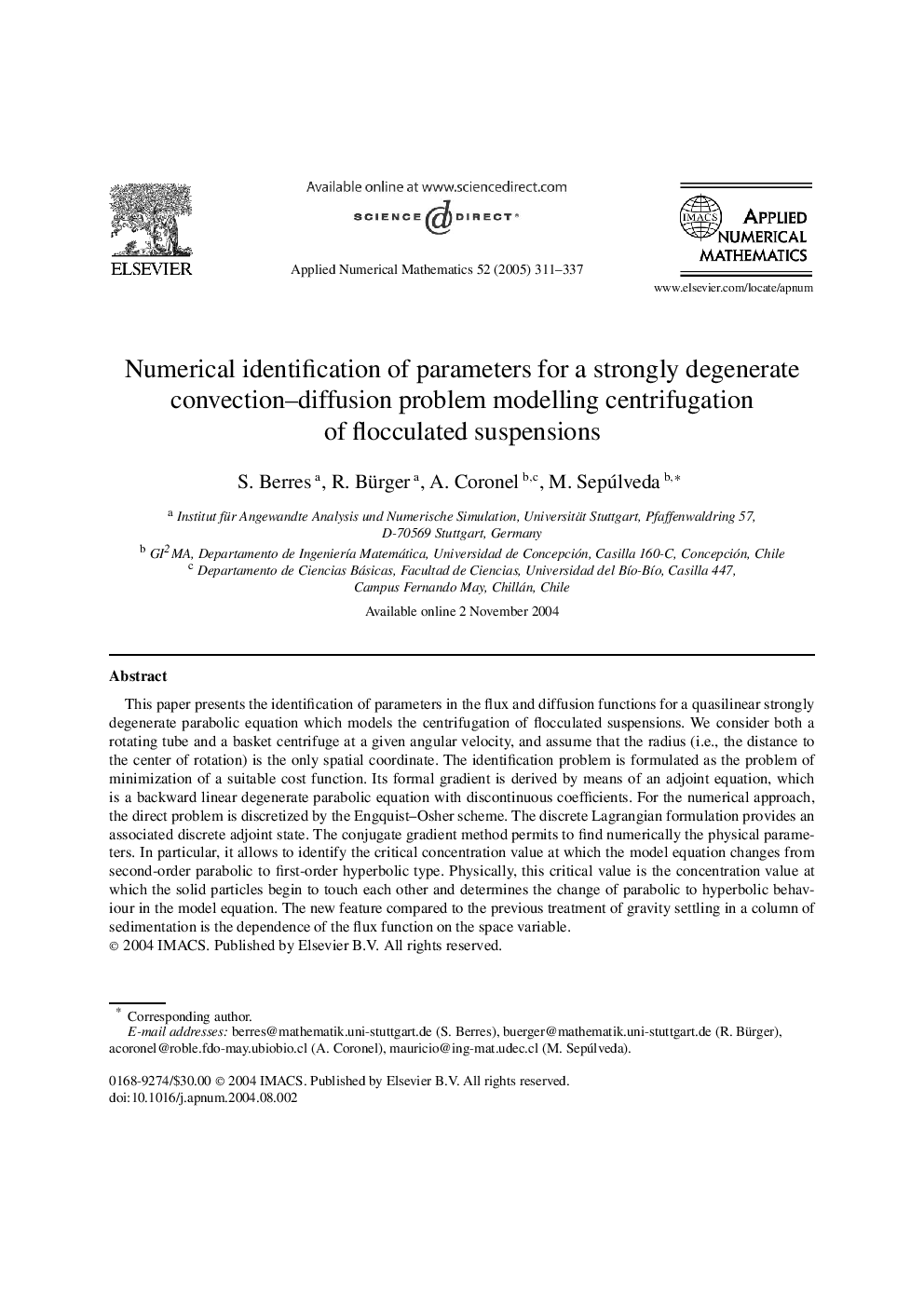| Article ID | Journal | Published Year | Pages | File Type |
|---|---|---|---|---|
| 9511651 | Applied Numerical Mathematics | 2005 | 27 Pages |
Abstract
This paper presents the identification of parameters in the flux and diffusion functions for a quasilinear strongly degenerate parabolic equation which models the centrifugation of flocculated suspensions. We consider both a rotating tube and a basket centrifuge at a given angular velocity, and assume that the radius (i.e., the distance to the center of rotation) is the only spatial coordinate. The identification problem is formulated as the problem of minimization of a suitable cost function. Its formal gradient is derived by means of an adjoint equation, which is a backward linear degenerate parabolic equation with discontinuous coefficients. For the numerical approach, the direct problem is discretized by the Engquist-Osher scheme. The discrete Lagrangian formulation provides an associated discrete adjoint state. The conjugate gradient method permits to find numerically the physical parameters. In particular, it allows to identify the critical concentration value at which the model equation changes from second-order parabolic to first-order hyperbolic type. Physically, this critical value is the concentration value at which the solid particles begin to touch each other and determines the change of parabolic to hyperbolic behaviour in the model equation. The new feature compared to the previous treatment of gravity settling in a column of sedimentation is the dependence of the flux function on the space variable.
Keywords
Related Topics
Physical Sciences and Engineering
Mathematics
Computational Mathematics
Authors
S. Berres, R. Bürger, A. Coronel, M. Sepúlveda,
